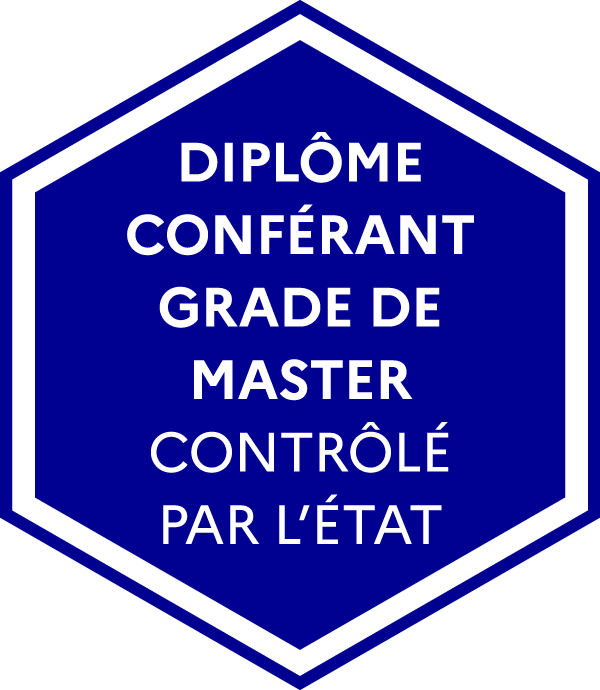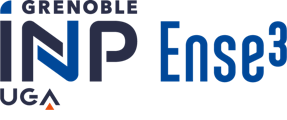Number of hours
- Lectures 30.0
- Projects -
- Tutorials -
- Internship -
- Laboratory works 30.0
ECTS
ECTS 5.0
Goal(s)
This course is divided into two parts. The first part aims to provide a better understanding of the tidal and wind turbine blades design (aerodynamic design, turbine performance and control). The second part deals with the static and dynamic analysis of structures under aero-hydrodynamic loading (i.e. typically a wind turbine blade). A session will also bring to the students general knowledge about the state of the art in marine renewable energy sources (offshore wind, tidal and wave turbines, ocean thermal energy conversion and osmotic power).
The learning outcomes are listed hereunder:
Wind turbines / MRE :
- To know the main marine energy sources and their potential
- To understand the aerodynamics of a wind turbine and the theoretical upper limit of its efficiency (the Betz limit)
- To understand and to calculate the lift and drag forces generation by an airfoil
- To be able to calculate the twisting and chord length distributions along the blade span
- To be able to calculate both power and thrust coefficients from a given turbine blade
- To be able to choose the nominal wind speed of a wind turbine based on the wind speed distribution at a given location
- To be able to calculate the annual energy production of a wind turbine at a given location
- To understand, analyze, calculate and improve the load factor of a wind turbine
IFS :
- To know and enumerate the different types of coupling for a complex system with fluid structure interaction
- To explain and describe a complex coupled system
- To apply the knowledge on a simplified case study
- To evaluate the risks of structural failure of a system
Pierre-Luc DELAFIN
Content(s)
This course is a mix of lectures and tutorials organized as follows:
I. Wind and tidal turbines: 14h
I.1 The Betz theory: 2h
I.2 Wing sections aerodynamics: 2h
I.3 Rotor design: 2h
I.4 Aerodynamic control of the rotor: 2h
I.5 Vertical axis turbines: 2h
I.6 careening devices / Marine energy sources / introduction to wakes: 2h
I.7 Feedback from a company of the sector: 2h
II. Aeroelasticity: 16h
II.1 Aerodynamics and strength of materials basics
II.2 Static aeroelasticity
II.3 Dynamic aeroelasticity
2 mini-projects are included in the course:
- MP1 (6h): Aerodynamic design of a wind turbine blade and calculation of the corresponding rotor performance + (8h): Annual energy production of a wind turbine at two different locations.
- MP2 (12h supervised + 4h without supervision): Numerical study (CFD/FEA) of a multi-MW wind turbine blade deformation under aerodynamic load.
MP1 allows the students to become familiar with the aerodynamic design of a horizontal-axis wind turbine rotor by calculating the twist angle and chord length distributions along the span of a blade. Then, students become familiar with the calculation of the annual energy production of a wind turbine as a function of the wind speed distribution and the control strategy of the turbine.
MP2 consists in the fluid-structure interaction (FSI) study of a wind turbine blade. 4 operating conditions are considered: cut-in, rated, cut-out and survival wind speeds. A CFD simulation is carried out in a first step to obtain the pressure distribution on the blade. This pressure distribution is then used in a FEA simulation to derive the corresponding blade deformation (one-way coupling). ANSYS workbench (Fluent/Mechanical) is used for this project, which gives students the opportunity to develop their skills in this simulation tool.
Both parts of the course require knowledge in fluid mechanics. The FSI part requires also knowledge in strength of materials, CFD and finite element analysis.
- Specific credits: this course brings 6.0 ECTS to students in Year 2 Master Fluid Mechanics and Energetics (M2 FME)
Firt session
Assessment (open to resit if necessary), AOR:
- Wind turbines and MRE: 1h30 written exam (exam1) (50% of OAR)
- Fluid Structure Interaction: 1h30 written exam (exam2) (50% of AOR)
Assessment that is not open to resit, ANOR: - Wind turbines and MRE: report or oral presentation of project1 (50% of ANOR)
- Fluid Structure Interaction: report or oral presentation of project2 (50% of ANOR)
-------------------------------------
In case of resit:
AOR : the mark obtained for the resit replaces the initial AOR mark.
ANOR : the mark obtained is not subject to resit, it is kept as it is to calculate the new mark.
EN 50% + ER 50%
The exam is given in english only 
The course exists in the following branches:
- Curriculum - M2 FME Research - Semester 9 (this course is given in english only
 )
) - Curriculum - Master's Degree in Engineering ME - Semester 9 (this course is given in english only
 )
)
Course ID : 5EUS5EMR
Course language(s): 
You can find this course among all other courses.
French State controlled diploma conferring a Master's degree




